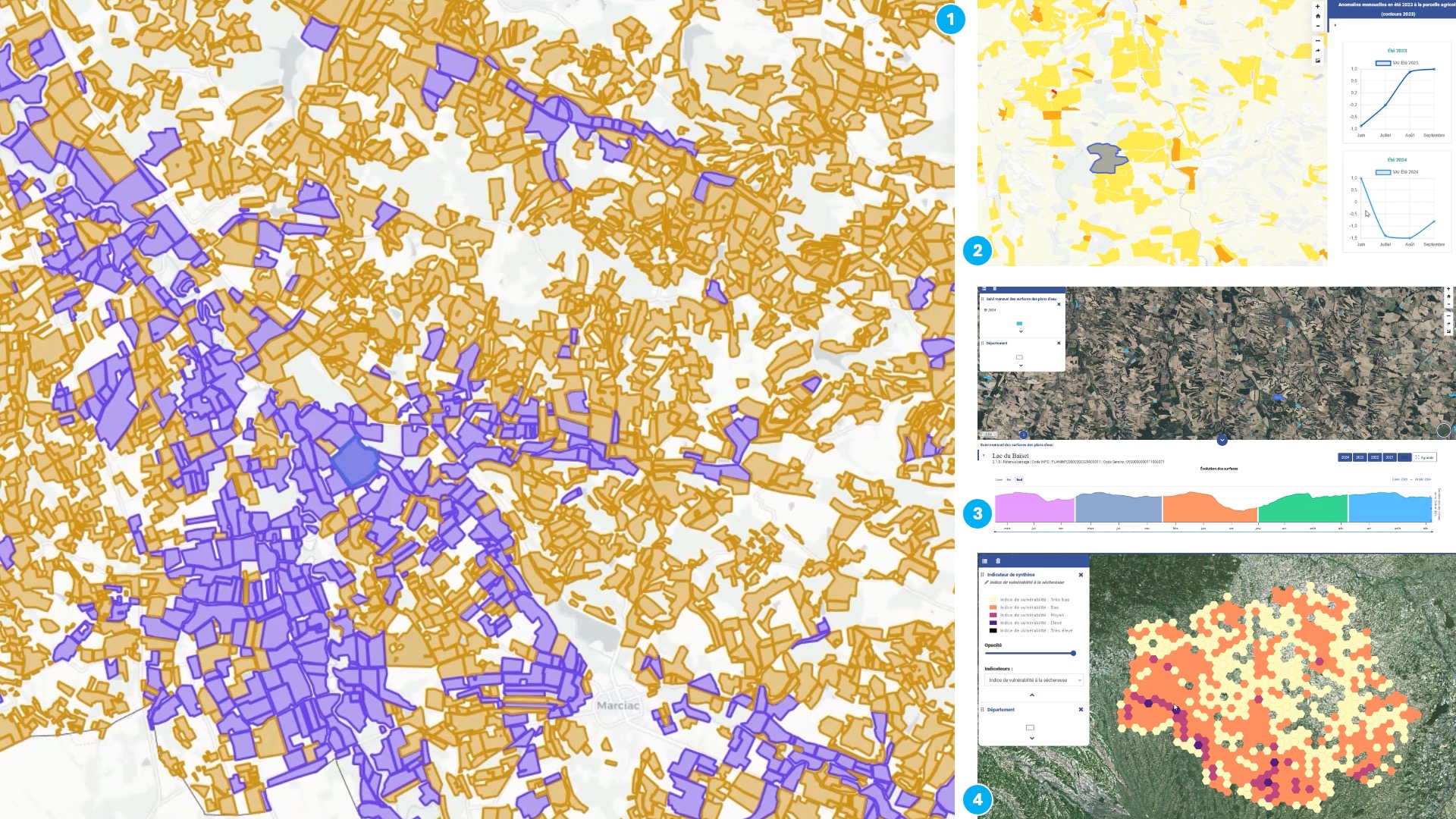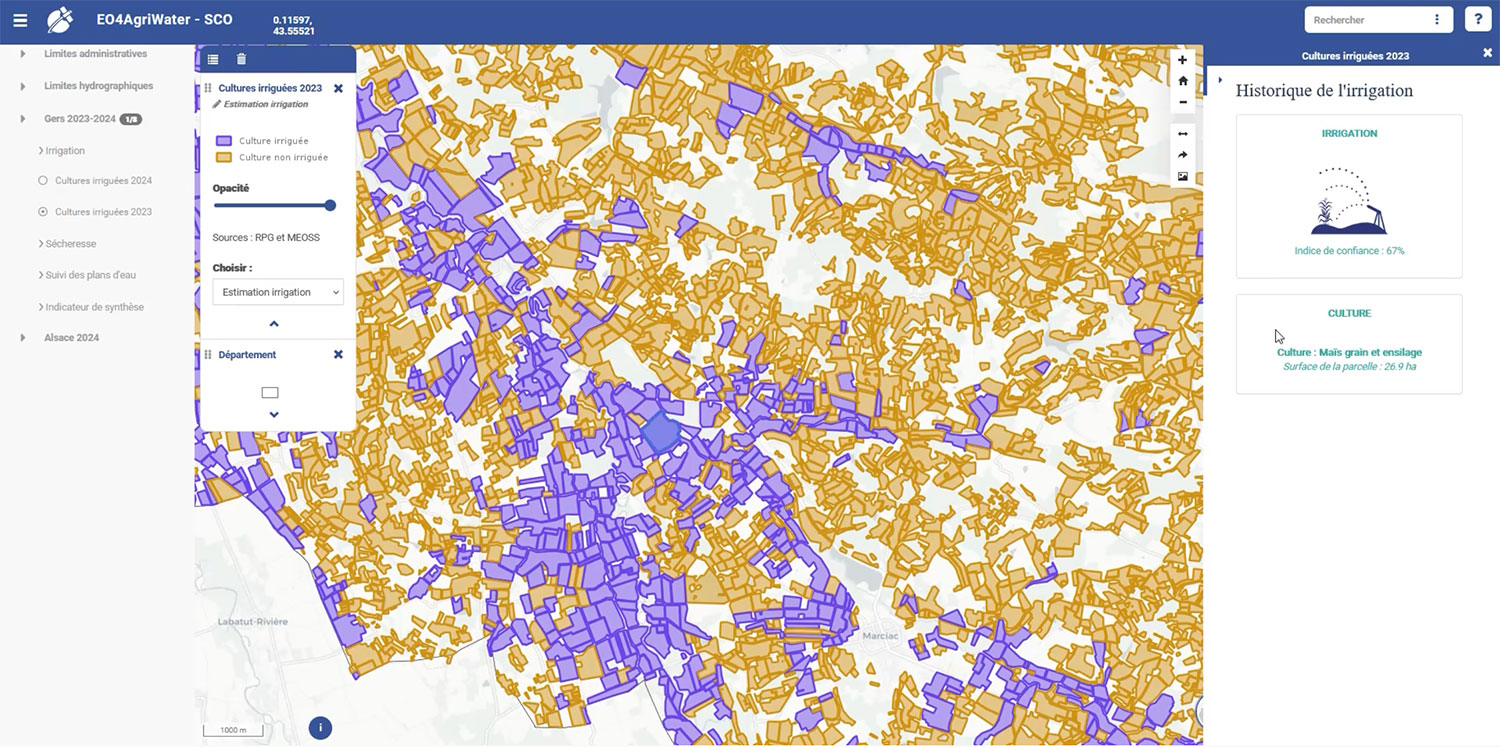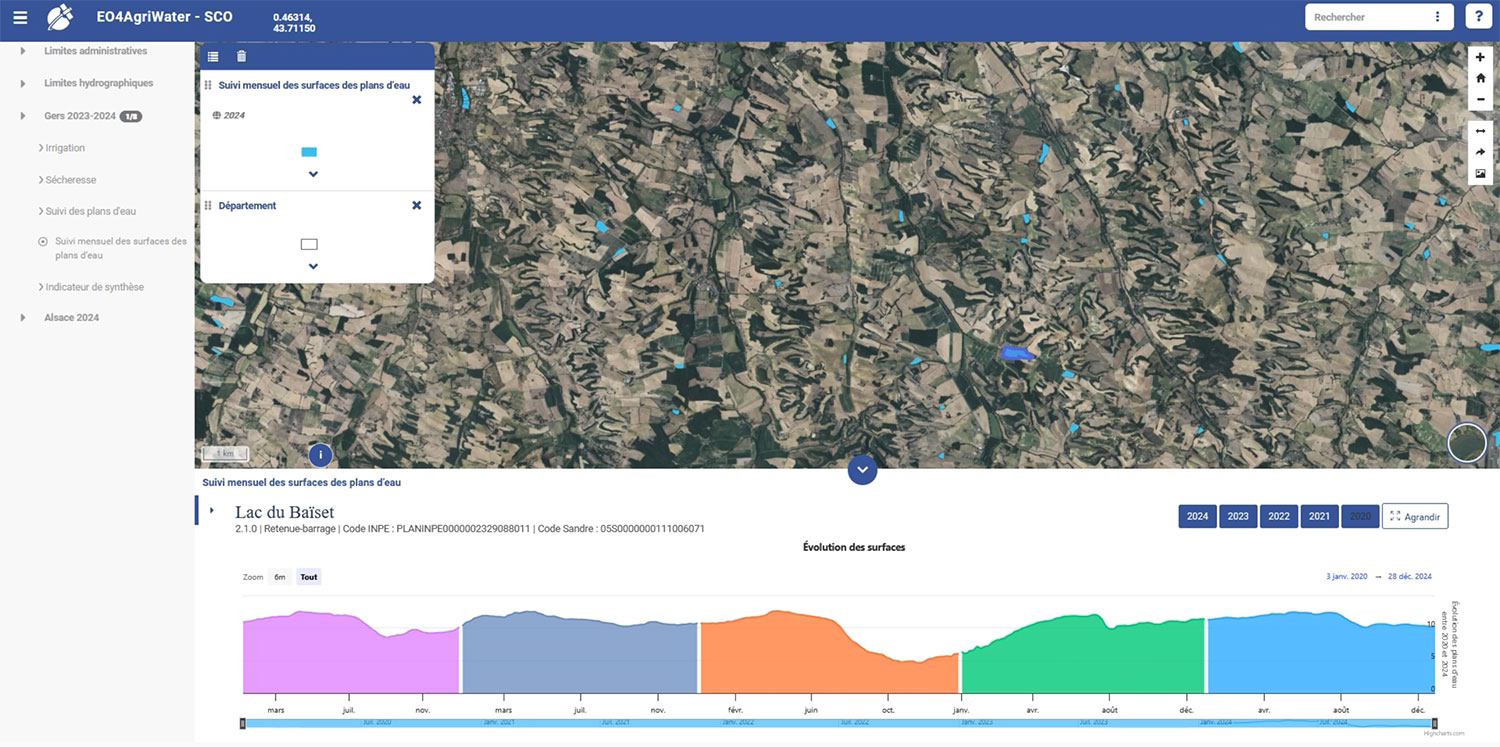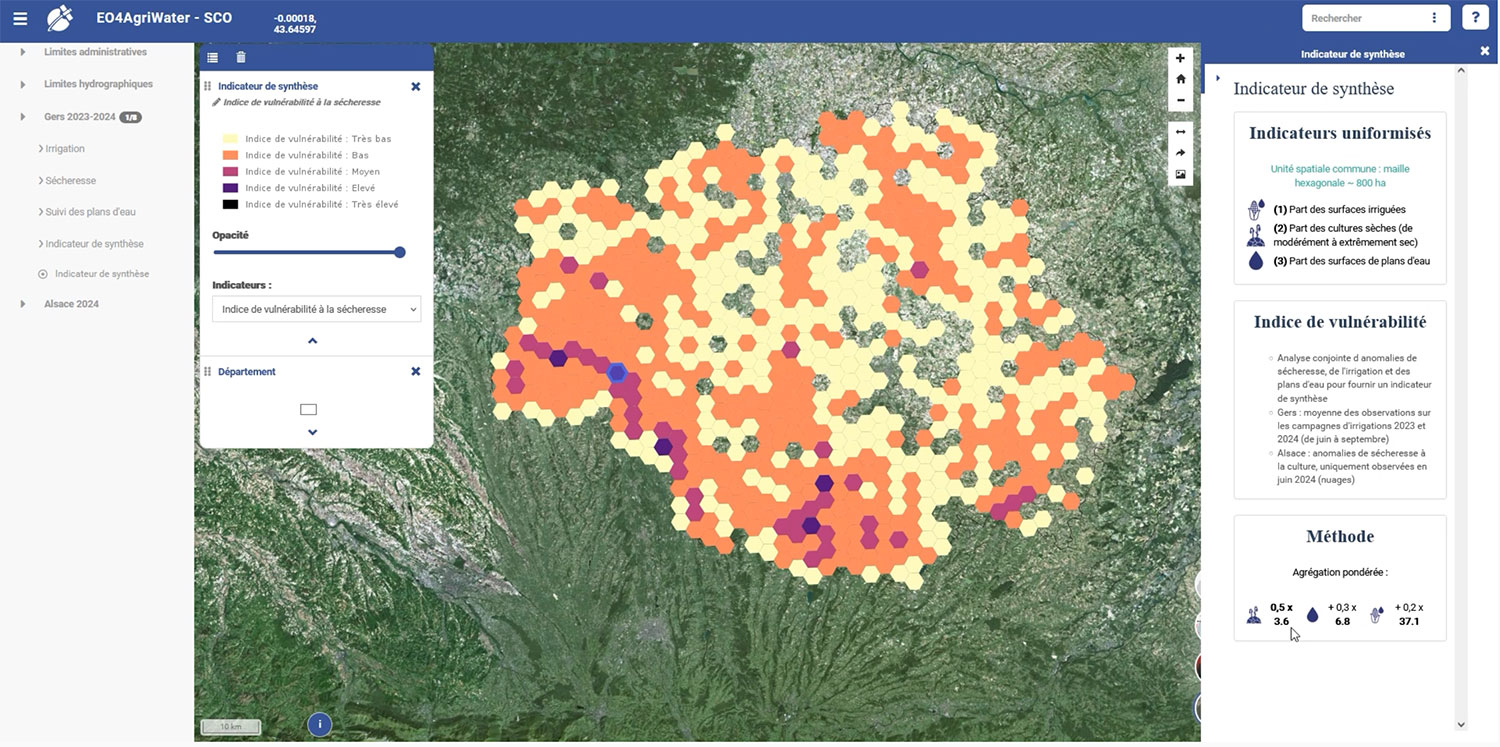EO4AgriWater: Satellite innovation at the service of agriculture and water
How can we better understand, locate and anticipate water resources in a changing climate, an issue closely linked to drought events? Taking up this dual challenge for agriculture, the Toulouse-based company MEOSS and the New Caledonian company INSiGHT have robustified the models they developed during previous SCO projects, testing their transferability from New Caledonia to France and vice versa. CESBIO contributed its scientific expertise to consolidate the results.
Conducted in three French pilot areas (Gers, Alsace, New Caledonia), the project used a multi-sensor approach (Sentinel-1 and 2, Landsat, MODIS, ASCAT/SMAP) and machine learning algorithms trained on more than 3,200 reference plots. Field campaigns show good to very good correlations with the results; the causes of the discrepancies have been identified and are being adjusted. The tool was co-developed with end users, in this case the chambers of agriculture in the pilot areas, to best meet their operational needs.
A mapping platform and key indicators
Accessible to the project's institutional partners via the commercial solution MEO-WaterManagement, the EO4AgriWater tool offers four main modules:
► Detection of irrigated/non-irrigated plots in the Gers region in 2023. © MEOSS |
|
► Monthly drought anomalies during the summer of 2023 in the Gers department. © MEOSS |
|
► Monitoring of water bodies from 2020 to 2024 in the Gers department. © MEOSS |
|
► Drought vulnerability index for plots in the Gers department. © MEOSS |
|
📧 Request a demonstration from MEOSS
💡For more information:
- See the detailed results, including the final report, on the project page
- Watch the replay of the MEOSS presentation, given during the 18th Quarterly Meeting of SCO France on 18 September 2025
A solid foundation for the future
EO4AgriWater and its associated tools (MEO-WaterManagement, MEO-WaterReserve, EO4DroughtMonitoring, Space4Irrig) are now a benchmark for strengthening the resilience of the agricultural sector in the face of water and climate challenges. Thanks to the synergy between technological innovation, scientific expertise and collaboration with stakeholders in the field, the project offers concrete solutions to anticipate crises and droughts, optimize irrigation and preserve water resources.
⚒The teams plan to integrate new data, notably from the future TRISHNA satellite mission, and to produce new indicators such as reservoir water volumes and groundwater levels.
🌎 On the road to complete automation of the production chain for large-scale deployment, MEOSS has partnered with the National Polytechnic Institute of Mexico to lead the VULANMEX project, accredited with SCO in 2025, to transfer the methodology to Mexico, particularly to maize production.







